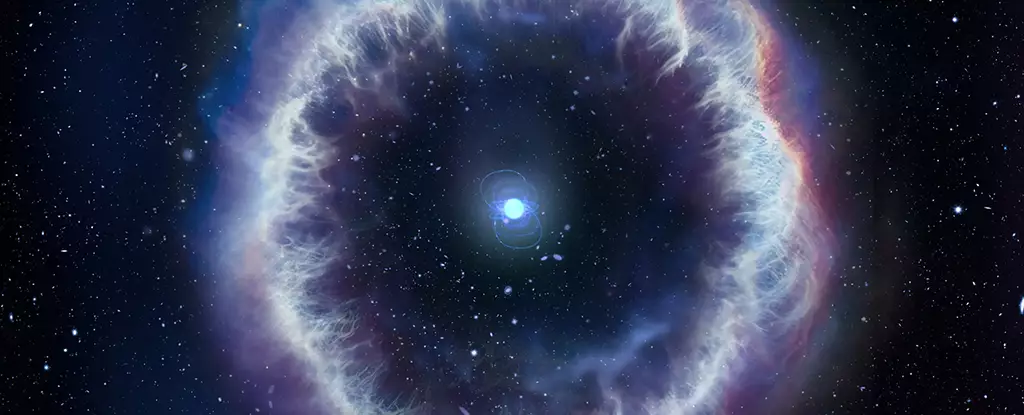Fast radio bursts (FRBs) have long been a subject of fascination and mystery within the field of astrophysics. These sudden and intense blasts of radio wave energy from deep space continue to baffle scientists, leaving many questions unanswered. A recent study conducted by researchers from the Italian National Institute for Astrophysics (INAF) delves into the intriguing phenomenon of FRBs, shedding light on potential sources and mechanisms behind these enigmatic signals.
In 2020, researchers identified FRB 20201124A, a specific fast radio burst that caught their attention. What sets this particular FRB apart is the presence of a persistent radio source (PRS) in close proximity to the signal. The study led by the INAF team focused on analyzing this PRS and its potential connection to the FRB. This PRS phenomenon, observed near a limited number of FRBs, offers valuable insights into the origins of these mysterious cosmic events.
Through meticulous measurements and radio observations, the researchers determined that the PRS associated with FRB 20201124A likely emanates from a plasma bubble enveloping the enigmatic source of the fast radio burst. This plasma bubble, described as an ionized nebula consisting of electrically charged gas and dust, poses intriguing possibilities for the underlying mechanisms generating FRBs. The team utilized data collected from the Very Large Array (VLA) Radio Telescope in New Mexico to support their findings.
The study suggests that the plasma bubble surrounding the source of FRB 20201124A could be linked to various astronomical phenomena, including the presence of a young magnetar or a binary system featuring a neutron star or a black hole. These celestial entities possess the immense energy capabilities required to produce the intense radio wave emissions characteristic of fast radio bursts. The formation of the plasma bubble within such systems presents a compelling scenario for understanding the background hum of the PRS.
Additional data gathered from the Northern Extended Millimeter Array (NOEMA) and Gran Telescopio Canarias telescopes provided further clarity on the energy release dynamics of the system across different wavelengths of light. This detailed analysis contributes to deciphering the signals originating from over a billion light years away, offering enhanced resolution and precision in understanding the complexities of FRBs. The high-resolution data obtained from radio observations significantly advances our knowledge of the spatial distribution and size of the FRB source.
The findings from this study mark a significant step forward in unraveling the mysteries surrounding fast radio bursts. While questions persist regarding the origin and nature of FRBs, the insights gained from analyzing FRB 20201124A provide valuable clues and hypotheses for further exploration. As astrophysicists continue to investigate these elusive cosmic phenomena, the puzzle of fast radio bursts edges closer to a comprehensive explanation, thanks to the dedicated efforts of research teams worldwide.
The quest to comprehend the enigmatic nature of fast radio bursts remains a compelling journey in astrophysical research, with each discovery unveiling new layers of complexity and intrigue. Through collaborative efforts and innovative methodologies, scientists strive to unlock the secrets of these fleeting cosmic signals, paving the way for unprecedented insights into the mysteries of the universe.


Leave a Reply